Hello all,
Am new here but for the past couple of weeks have been finding this place the most helpful regarding answers to my renovation.
I bought my first house in the middle of June, 1884 build Victorian semi detached. I knew it was gonna be a bit of a renovation project, but I did not anticipate the extent of which was going to suddenly come to light. Partly because the sellers had hidden everything so well even the L3 survey didn’t pick it up. I have since heard from my lovely neighbours the extent to which they were doing this right up until I moved in.
The one thing the survey did pick up was the concrete render over he DPC and how this needed removing and the ground lowering as the ground was half way up the outside vents.
I’ve removed the concrete, I’ve lowered the ground to below the vents.
In a couple of areas I could see slate along the walls so I could figure out that was the DPC. However this doesn’t line up with the vents. And the vents are slate lined and go down way under the sub base. Under my floorboards there is maybe two inches and then concrete. And apart from around the concrete that is dry, the water is coming in from the sides. The two walls where I have removed the concrete the water ingress is visibly less despite me having not fixed the brickwork fully or rendered ( a week of rain prevented this but I had it covered up with waterproof tarp.)
Now it’s sunny I’ve started to fill in the brick work and doing to begin the rendering in lime mortar.
However, I am now lost as to where to start and finish this. Due to time and weather I stopped smashing down the ground level and chipping off the concrete a couple of inches below the vents. But today I noticed the rendering goes down far far further.
Do I need to go down in my removal right to where the current rendering stops? What is down there? This is well below the base under my floorboards and I don’t know if damp is coming into whatever is under there? How do I find out.
Pictures attached so the above makes a bit of sense.
Appreciate any advice as this is urgent for a variety of reasons. Mostly because the guarantee I get with the de-moulding is void if I don’t stop the damp. And I have 11 days…..
First photo is where I have started filling in gaps in mortar so I can render.
Second photo is a close up of the existing render I had removed but it goes so far down. What do I do here? It is well below the slate lined vents.
Third photo is of the wall I am still working on lowering the ground. But same applies to where is the dpc and do I remove the rendering regardless of how deep it goes?
Related but different question. The worst damp is coming into from around my fireplace. I’ve removed concrete and floorboards and found there is no sub base surrounding the chimney. Does anyone know why this might be? Can I just create one via plaster sheeting and cement that matches the height of the rest of my flooring?
Am doing all of this entirely by myself and the research alone is taking up so much time so I’ve truly appreciated everything in this website as it has solved a lot of questions the rest of the internet couldn’t!
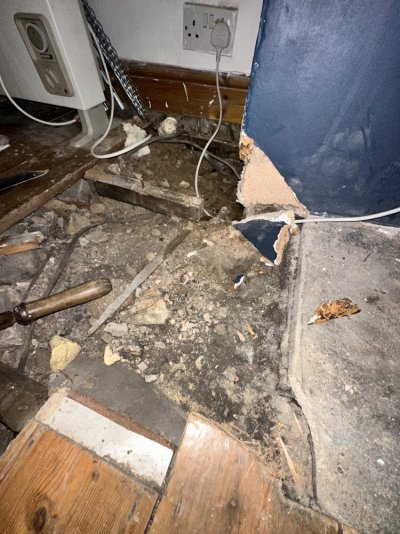
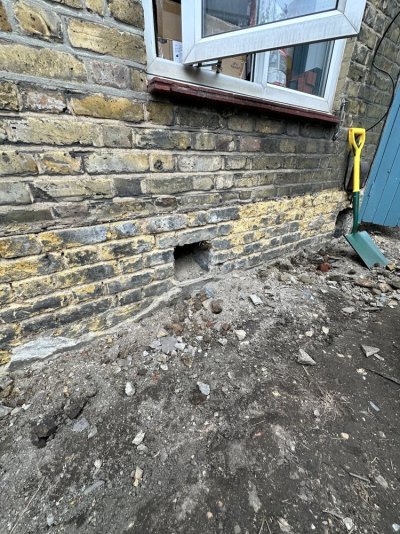
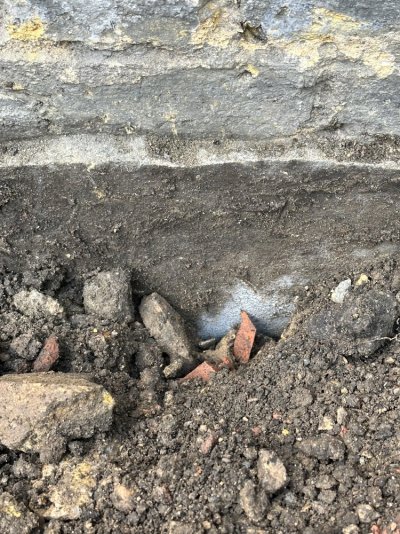
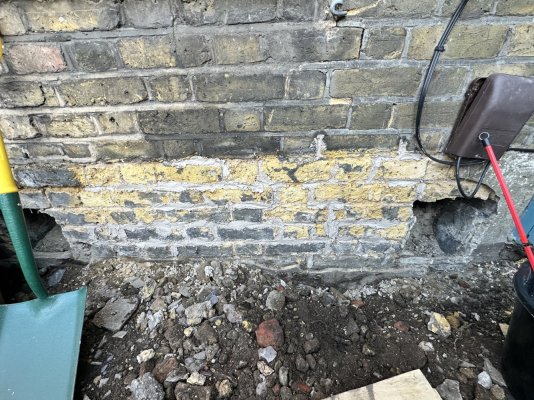
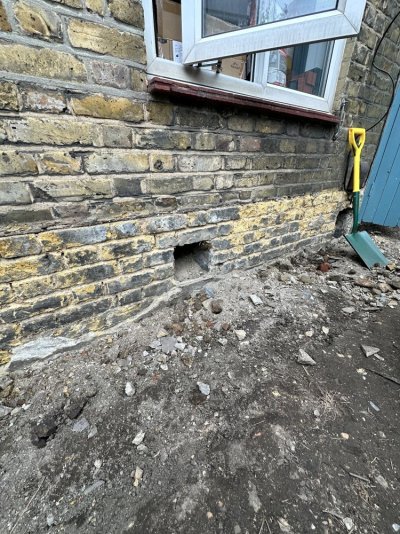
Am new here but for the past couple of weeks have been finding this place the most helpful regarding answers to my renovation.
I bought my first house in the middle of June, 1884 build Victorian semi detached. I knew it was gonna be a bit of a renovation project, but I did not anticipate the extent of which was going to suddenly come to light. Partly because the sellers had hidden everything so well even the L3 survey didn’t pick it up. I have since heard from my lovely neighbours the extent to which they were doing this right up until I moved in.
The one thing the survey did pick up was the concrete render over he DPC and how this needed removing and the ground lowering as the ground was half way up the outside vents.
I’ve removed the concrete, I’ve lowered the ground to below the vents.
In a couple of areas I could see slate along the walls so I could figure out that was the DPC. However this doesn’t line up with the vents. And the vents are slate lined and go down way under the sub base. Under my floorboards there is maybe two inches and then concrete. And apart from around the concrete that is dry, the water is coming in from the sides. The two walls where I have removed the concrete the water ingress is visibly less despite me having not fixed the brickwork fully or rendered ( a week of rain prevented this but I had it covered up with waterproof tarp.)
Now it’s sunny I’ve started to fill in the brick work and doing to begin the rendering in lime mortar.
However, I am now lost as to where to start and finish this. Due to time and weather I stopped smashing down the ground level and chipping off the concrete a couple of inches below the vents. But today I noticed the rendering goes down far far further.
Do I need to go down in my removal right to where the current rendering stops? What is down there? This is well below the base under my floorboards and I don’t know if damp is coming into whatever is under there? How do I find out.
Pictures attached so the above makes a bit of sense.
Appreciate any advice as this is urgent for a variety of reasons. Mostly because the guarantee I get with the de-moulding is void if I don’t stop the damp. And I have 11 days…..
First photo is where I have started filling in gaps in mortar so I can render.
Second photo is a close up of the existing render I had removed but it goes so far down. What do I do here? It is well below the slate lined vents.
Third photo is of the wall I am still working on lowering the ground. But same applies to where is the dpc and do I remove the rendering regardless of how deep it goes?
Related but different question. The worst damp is coming into from around my fireplace. I’ve removed concrete and floorboards and found there is no sub base surrounding the chimney. Does anyone know why this might be? Can I just create one via plaster sheeting and cement that matches the height of the rest of my flooring?
Am doing all of this entirely by myself and the research alone is taking up so much time so I’ve truly appreciated everything in this website as it has solved a lot of questions the rest of the internet couldn’t!





